Given the comment by @barny I don't know if this will work, but you can try the code below. I created a script that selects the display area and warps this into a straight image. Next a threshold to a black and white mask of the characters and the result is cleaned up a bit.
Try if it improves recognition. If it does, also look at the intermediate stages so you'll understand all that happens.
Update: It seems Tesseract prefers black text on white background, inverted and dilated the result.
Result:

Updated result:

Code:
import numpy as np
import cv2
# load image
image = cv2.imread('disp.jpg')
# create grayscale
gray_image = cv2.cvtColor(image, cv2.COLOR_BGR2GRAY)
# perform threshold
retr, mask = cv2.threshold(gray_image, 190, 255, cv2.THRESH_BINARY)
# findcontours
ret, contours, hier = cv2.findContours(mask, cv2.RETR_EXTERNAL, cv2.CHAIN_APPROX_SIMPLE)
# select the largest contour
largest_area = 0
for cnt in contours:
if cv2.contourArea(cnt) > largest_area:
cont = cnt
largest_area = cv2.contourArea(cnt)
# find the rectangle (and the cornerpoints of that rectangle) that surrounds the contours / photo
rect = cv2.minAreaRect(cont)
box = cv2.boxPoints(rect)
box = np.int0(box)
#### Warp image to square
# assign cornerpoints of the region of interest
pts1 = np.float32([box[2],box[3],box[1],box[0]])
# provide new coordinates of cornerpoints
pts2 = np.float32([[0,0],[500,0],[0,110],[500,110]])
# determine and apply transformationmatrix
M = cv2.getPerspectiveTransform(pts1,pts2)
tmp = cv2.warpPerspective(image,M,(500,110))
# create grayscale
gray_image2 = cv2.cvtColor(tmp, cv2.COLOR_BGR2GRAY)
# perform threshold
retr, mask2 = cv2.threshold(gray_image2, 160, 255, cv2.THRESH_BINARY_INV)
# remove noise / close gaps
kernel = np.ones((5,5),np.uint8)
result = cv2.morphologyEx(mask2, cv2.MORPH_CLOSE, kernel)
#draw rectangle on original image
cv2.drawContours(image, [box], 0, (255,0,0), 2)
# dilate result to make characters more solid
kernel2 = np.ones((3,3),np.uint8)
result = cv2.dilate(result,kernel2,iterations = 1)
#invert to get black text on white background
result = cv2.bitwise_not(result)
#show image
cv2.imshow("Result", result)
cv2.imshow("Image", image)
cv2.waitKey(0)
cv2.destroyAllWindows()


